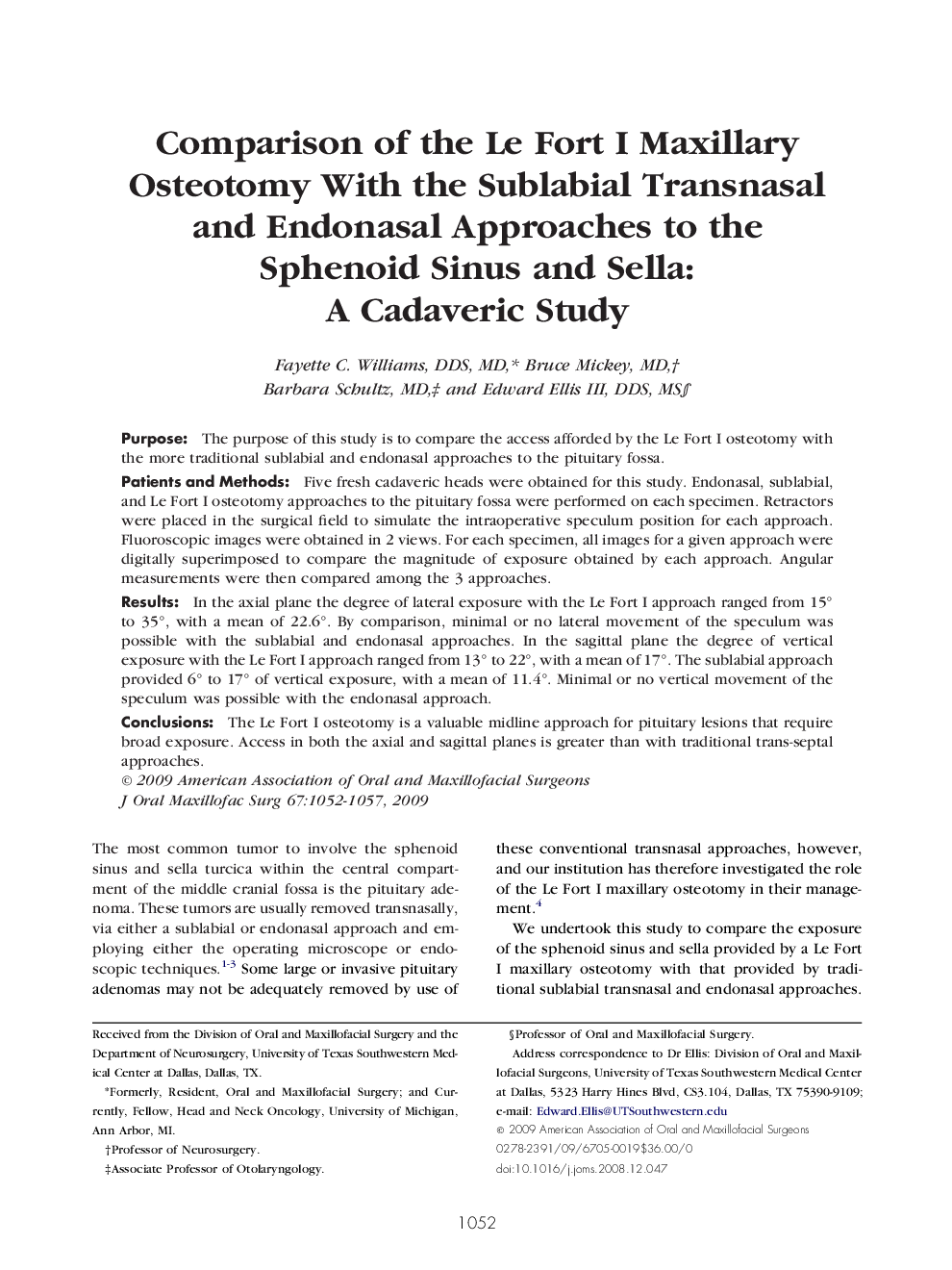| Article ID | Journal | Published Year | Pages | File Type |
|---|---|---|---|---|
| 3154193 | Journal of Oral and Maxillofacial Surgery | 2009 | 6 Pages |
PurposeThe purpose of this study is to compare the access afforded by the Le Fort I osteotomy with the more traditional sublabial and endonasal approaches to the pituitary fossa.Patients and MethodsFive fresh cadaveric heads were obtained for this study. Endonasal, sublabial, and Le Fort I osteotomy approaches to the pituitary fossa were performed on each specimen. Retractors were placed in the surgical field to simulate the intraoperative speculum position for each approach. Fluoroscopic images were obtained in 2 views. For each specimen, all images for a given approach were digitally superimposed to compare the magnitude of exposure obtained by each approach. Angular measurements were then compared among the 3 approaches.ResultsIn the axial plane the degree of lateral exposure with the Le Fort I approach ranged from 15° to 35°, with a mean of 22.6°. By comparison, minimal or no lateral movement of the speculum was possible with the sublabial and endonasal approaches. In the sagittal plane the degree of vertical exposure with the Le Fort I approach ranged from 13° to 22°, with a mean of 17°. The sublabial approach provided 6° to 17° of vertical exposure, with a mean of 11.4°. Minimal or no vertical movement of the speculum was possible with the endonasal approach.ConclusionsThe Le Fort I osteotomy is a valuable midline approach for pituitary lesions that require broad exposure. Access in both the axial and sagittal planes is greater than with traditional trans-septal approaches.
